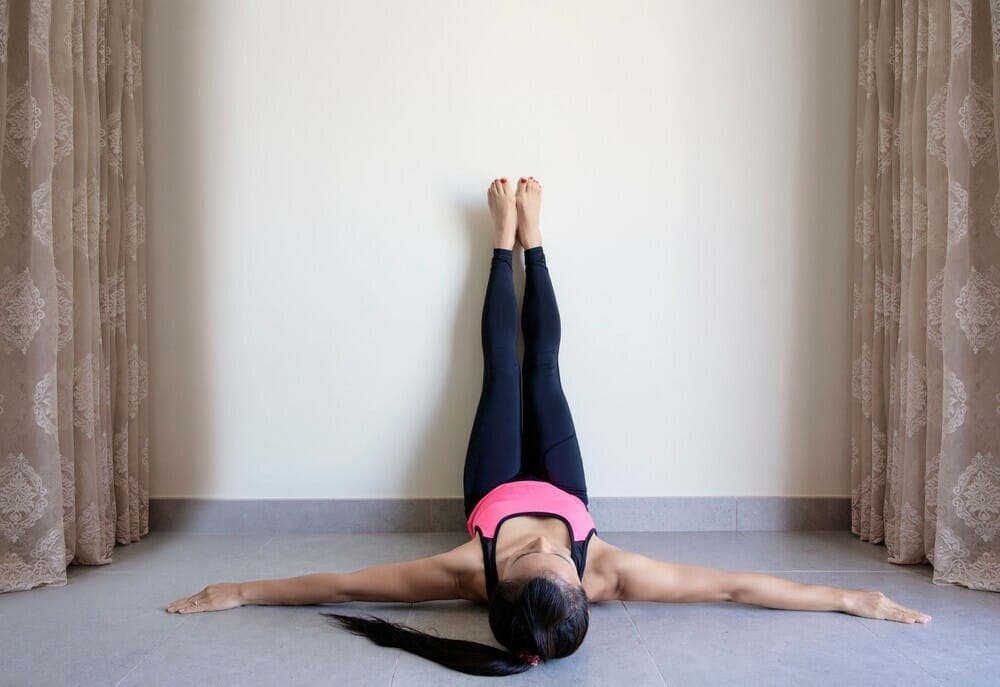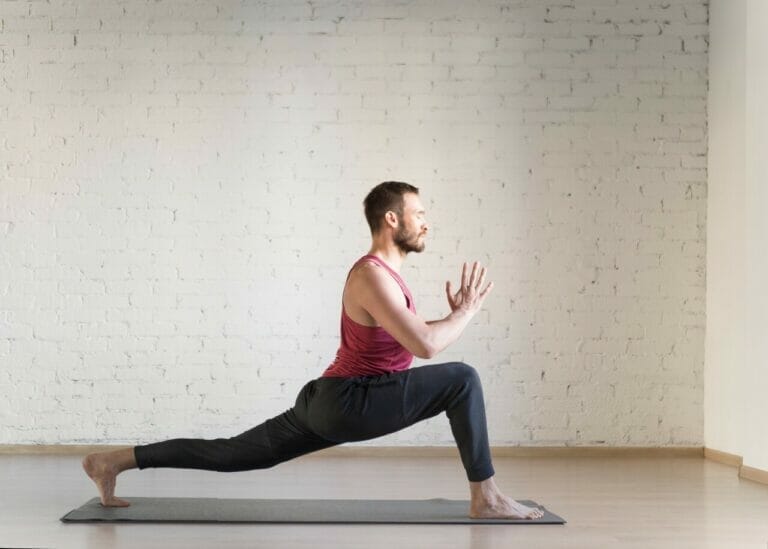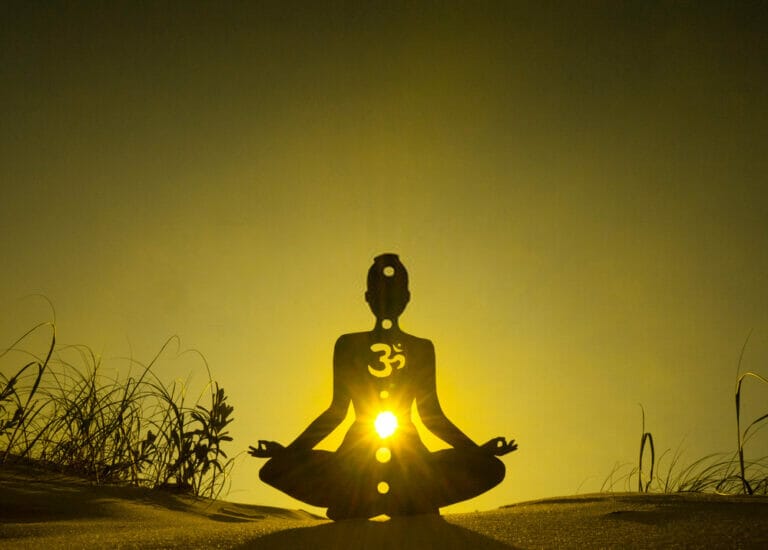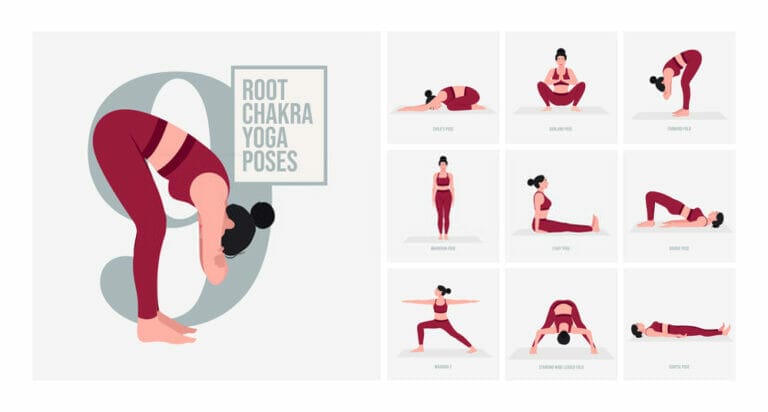Yoga Poses For Legs You Must Know!
Practising yoga may improve your emotional, physical, and spiritual well-being.
This ancient technique is well-known for its capacity to decrease tension, alleviate mild discomfort, relieve stress, and enhance sleep quality.
But did you know that yoga may also be quite beneficial to your legs? Yes, both standing and supine (lying face up) yoga poses may help you improve your lower body’s balance, flexibility, and strength.
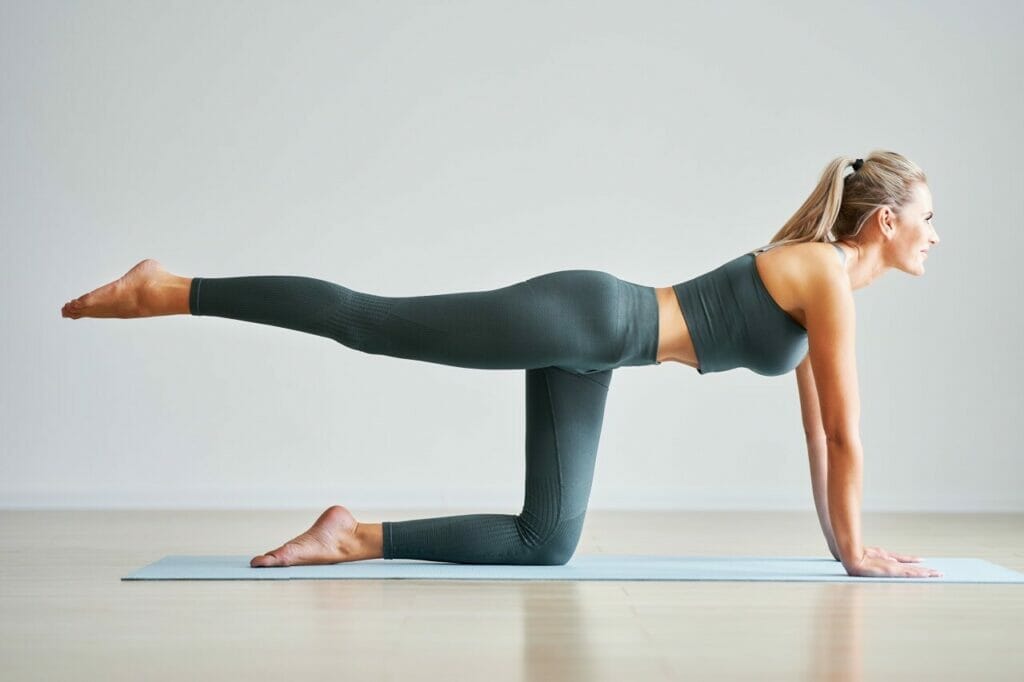
Like every other body part, our legs require regular treatment to remain robust, flexible and grounded enough to enable us to carry out our daily duties as efficiently as possible.
Let’s look at how yoga may aid your legs and which postures are particularly beneficial.
Downward-Facing Dog Pose
The Downward-Facing Dog Pose (Adho Mukha Svanasana) may be the most effective yoga pose to keep your legs strong and flexible.
It strengthens the ankles, toes, and knees while extending the shoulders, back, and calves.
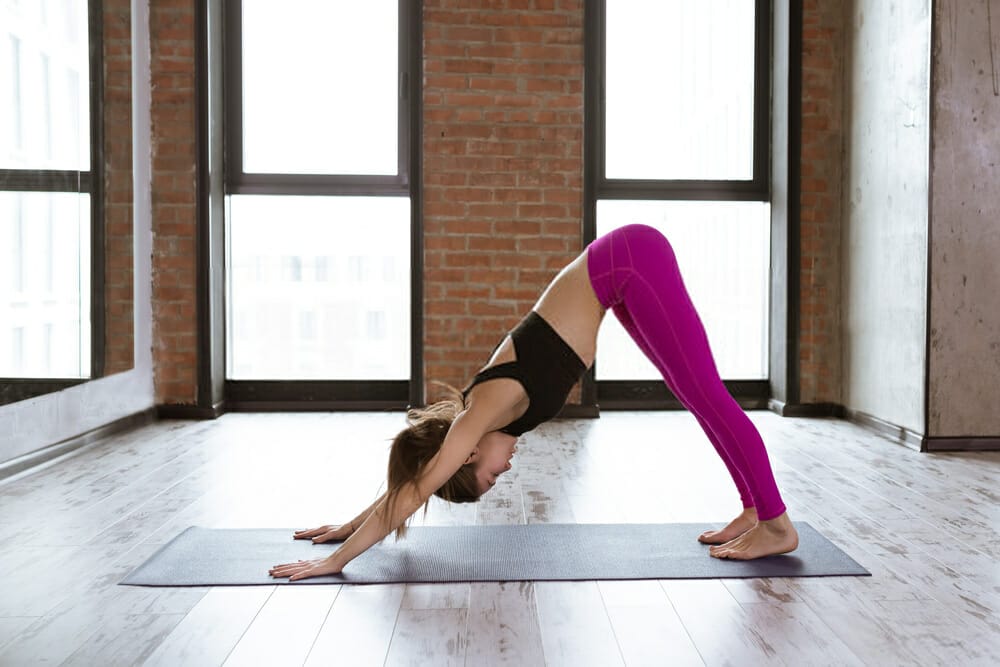
In addition, it lengthens the muscles, resulting in an increased range of motion and flexibility.
Begin with your palms and feet on the floor, your fingers spread out like a star, and your knees bent precisely beneath your hips.
Take a deep breath and prepare your mind and body to lift your hips towards the ceiling.
Exhale slowly as you gently pull your hips upwards, straightening your knees and balancing your weight on the palms and soles of your feet.
Look between your toes while doing this posture, and don't allow your head to dangle between your arms.
As a novice, hold the posture for 15-30 seconds. Exhale slowly and return to the beginning position.
Warrior II pose
Warrior II Pose, also known as Virabhadrasana II, strengthens and extends the legs, ankles, shoulders, and arms.
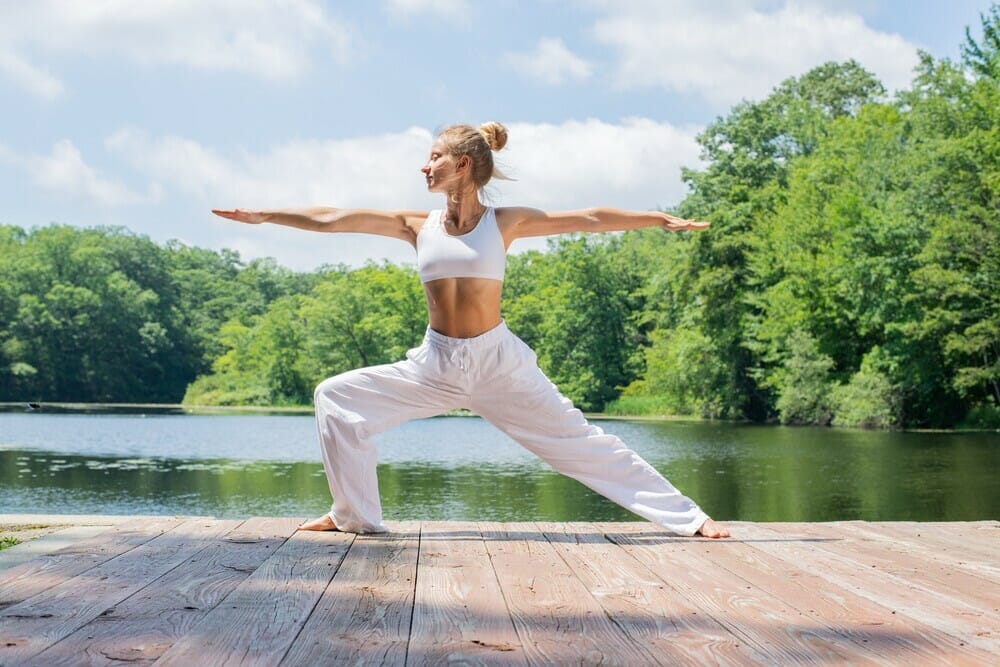
Stand in the Mountain Pose (Tadasana). Step your feet 3 1/2 to 4 feet apart as you exhale. Raise your arms parallel to the floor and deliberately extend them out to the sides, shoulder blades wide and palms down.
Turn your right foot slightly to the right and your left foot 90 degrees out to the left. Exhale and bend your left knee over your left ankle, shin perpendicular to the floor. Bring the left thigh parallel to the floor if feasible.
Stretch the arms parallel to the floor and straight above the pelvis, away from the area between the shoulder blades.
Slightly press the tailbone toward the pubis. Then reverse your feet and perform the asana on the opposite side.
Half Moon Pose
Begin by taking the Warrior II Pose. Lean onto your front leg and shift your weight there.

Reach your proper fingertips down to the floor in front of your toes, toward the side of your foot with the pinky toe. If reaching the ground is difficult, you can rest your hand on a block instead.
Elevate your back foot to the height of your hip and activate your leg as you lift your foot. Engage your calf muscles by flexing your raised foot.
Bend your front leg if you’re having difficulties staying balanced. It may help you achieve posture more easily.
Stack your shoulders and extend your left arm to the heavens. Look up at the top of your left hand. Hold the pose for 30-60 seconds.
Chair Pose
This traditional position will help to strengthen your quads. It’s similar to sitting on a chair, except you’re holding yourself up right before you sit. Start with your feet together or shoulder-width apart while standing.
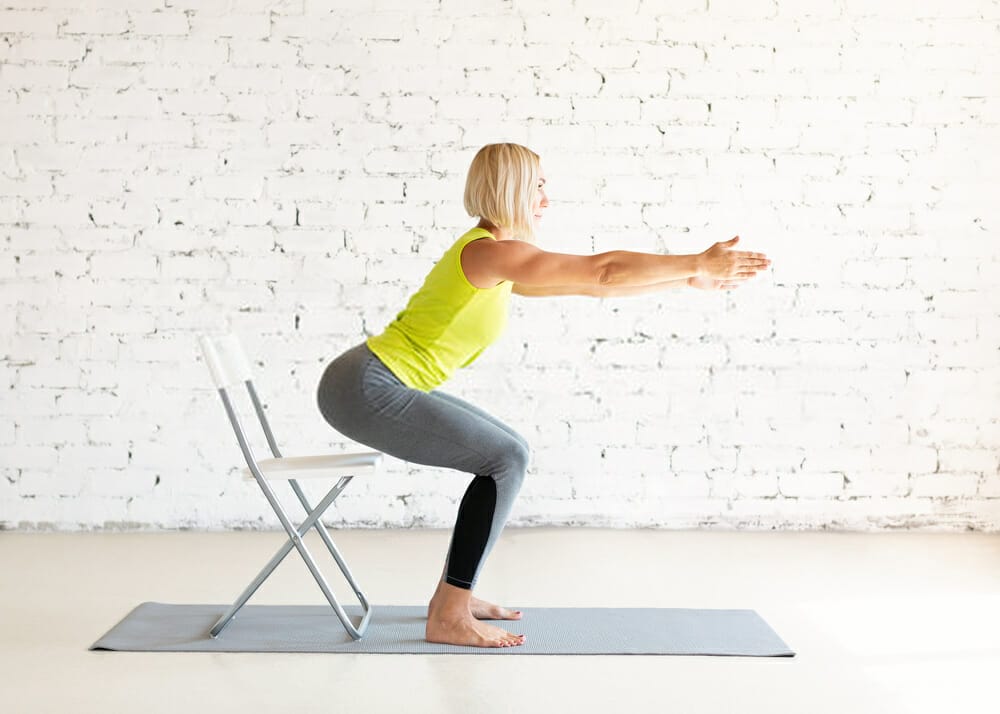
Next, reach your arms over your head, bend your knees, and push your hips back with a straight spine.
Your gaze can be ahead or slightly up, but avoid tilting your head back to avoid injuring your neck. It is an excellent position for feeling grounded, increasing heat, and increasing strength.
Begin with a few seconds of holding the position and gradually rising to 60-90 seconds.
Waterfall Pose
The Waterfall Pose will help you make a strong connection between your upper and lower body.
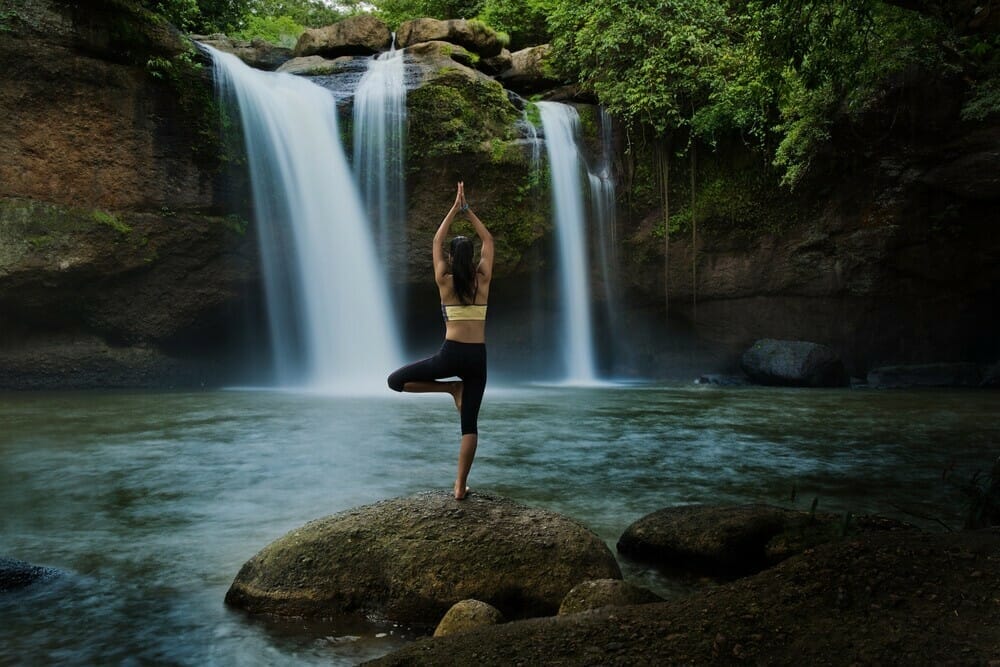
It relieves swelling in the feet and legs and is ideal if you have varicose veins, sciatica, or any other disease that causes pain in your legs when standing.
Cover the floor with a yoga mat or a thick blanket. Lie down with your legs straight and your arms at your sides. Bend your knees in toward your chest, then raise both legs to the ceiling.
Your legs should be touching, and flex your feet such that the bottom of each foot faces the ceiling. Continue to hold this posture for as long as you are able.
Low Lunge
Low Lunge, also known as Anjaneyasana, is a yoga position that improves strength and flexibility in the hips, legs, shoulders, and knees.

Begin in the Downward Dog position. Exhale and take a stride forward with your right foot between your hands. Lower your left knee to the floor, landing on the top of your foot.
Inhale now and lift your body upright, sweeping your arms out to your sides and up overhead. Straighten your arms and keep them perpendicular to the floor. Maintain a slight lift in your chin, but not so much that it crushes your neck. Also, refrain from slouching!
Extended Side Angle Pose
Utthita Parsvakonasana, or Extended Side Angle Pose, strengthens and stretches the ankles. In addition, it stretches the calf muscles, ankles, and knees.

Begin by standing straight, then exhale and spread your feet three feet apart. Raise your arms so that they are parallel to the floor. Turn your left foot to the left and your right foot forward.
urn your left thigh outwards slowly until the middle of your knee and the ankle of your left foot are in the same line.
Inhale and steadily bend your left knee over your left ankle, bringing the shin perpendicular to the ground. The left thigh is now perpendicular to the floor. From hip to ankle, your right leg is straight and extended.
Slowly raise your right arm above your head on your left side in this posture. The palm should be straight and facing the ground. The arm should also be in contact with your right ear.
Slowly turn your face inward and examine your palm. Your other arm should be contacting the left leg’s ankle without withdrawing support from the shoulder or the ankle.
Push the outstretched arm firmly towards the ceiling while inhaling and breathing. Repeat this a few times, then gently return to the beginning position.
Safety tips
- If you are pregnant, have conditions such as back or neck problems, are overweight, or over 40, I recommend getting medical advice before practising any asana.
- Slow down and take time to check your alignment before proceeding into each posture.
- Do not assume that postures are safe to do if you have any diseases. Please consult your doctor and follow their instructions before attempting ANY yoga pose.
- A yoga mat is an excellent alternative to the floor, especially when practising poses requiring balance. A yoga mat also protects your floor from carpet fibres and will help prevent injuries on an uneven surface.
- When practising on the floor, use a thick blanket or yoga mat to protect your hips and knees.
- Using a pillow to cushion your hips while practising Knee Hugging Yoga can relieve pressure on the spine, lower back, and knees. It can also improve alignment in many poses.
The Bottom Line
You’ve stretched your inner thighs, hamstrings, lower back, quadriceps, calves, and Achilles. All of the stretchings will result in more flexible legs.
We've also strengthened our quadriceps and glutes and added some postures to target the core muscles and inner thigh muscles.
We’ve covered a lot of ground in this guide to yoga, and as we know, it can be overwhelming. If you’re still unsure how to best incorporate the practice into your routine, why not start small and add more poses over time?
You can always add more asanas or add a few more days to your practice schedule.
Getting started may seem intimidating, but once you get past the initial hurdles, yoga is one of those practices that will massage every single muscle and joint in your body.

